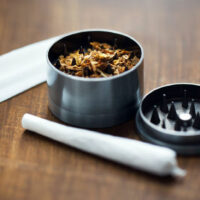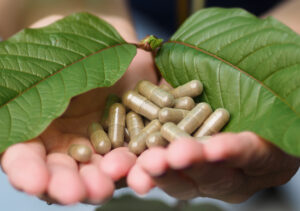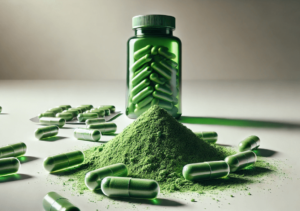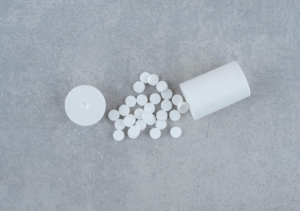Cannabis legalization has inspired many people to dip their hands into cannabis.
In a perfect world, the first high should be a unique and pleasant experience — unfortunately, that’s not always the case.
Sometimes it takes a bit of trial and error to learn how to properly use cannabis in order to really enjoy it.
Don’t worry, because you are not alone in this: I will walk you through every step there is in order to make this new experience as enjoyable as possible.
First off, it’s not uncommon not to get high
Not getting high after smoking weed for the first time is not uncommon.
This happens for several reasons but most of the times newbies don’t know how to inhale cannabis properly. Here’s how to do it right.
How to properly inhale cannabis?
As you draw in from a joint (or a vaporizer), you should try to inhale the smoke directly to your lungs and hold it for a brief moment before exhaling.
If the smoke is too harsh and it tickles your throat, try to hold it in your mouth for a second (so the smoke can cool off) before inhaling it.
Although smoking is only one of the ways to consume cannabis, it’s one of the most common consumption methods and enables you to feel the effects almost immediately.
As a first-time smoker, you’ll probably go through a few coughing fits before you get accustomed to it.
So why do some people fail to get high after smoking weed for the first time, even though they inhaled properly?
This is mostly due to a lack of cannabinoid receptors.
People with fewer cannabinoid receptors must consume cannabis a few times in order to feel any effects, because the cellular receptors are how both cannabinoids from cannabis interact with the body.
Upon entering the bloodstream, active compounds from cannabis gradually increase the number of available cannabinoid receptors.
A body that has never been exposed to THC and other cannabinoids, has to go through a “sensitization period”.
This is a relatively rare occurrence, but if nothing happens the first time you use cannabis, you can rest assured that the lack of receptors is to blame.
And don’t worry, after a couple of tries you’ll get high.
What does weed make you feel like?
If you smoke (but also if you vape, or use a bong), you will feel the initial effects within minutes.
These are the fastest ways to get high. If you’ve inhaled correctly and if your receptors are ready for work, you’ll start feeling a brand-new sensation in your head right away.
Feeling the high in your head
The buzz in your mind depends on which strain you’ve consumed (its potency and cannabinoid and terpene levels), the amount you’ve taken in, the surroundings and definitely the mood you’re in at the moment.
Cannabis affects people differently: Most of us love how it feels, others don’t.
For some people it takes a bit of time to get used to this feeling, so try to be patient. Some will never be comfortable with cannabis and that’s perfectly OK.
High THC strains usually induce a very potent buzz, while strains with an equal amount of THC and CBD (and also pure CBD strains), produce very little to no cerebral effect.
Being high is not like being drunk. Pot gives you a floating-like sensation of euphoria and pleasure.
Feeling the high in your body (the “Couch-Lock” effect)
Body high is closely associated with high-THC strains that have a lot of a terpene called myrcene in them. Most often, those strains have indica genetics.
For your first weed experience, especially if you’ve chosen an indica dominant strain, it’s important to make yourself as comfortable as you can because you’re probably about to experience the famous “couch-lock” effect—this most likely happens because indica genetics have a sedative combination of cannabinoids and terpenes.
Some might consider couch-lock to be a side effect, but many cannabis enthusiasts enjoy it as it makes you really laid back and relaxed.
You’ll probably feel very lazy, and all you’ll want to do is lay on your favorite couch, eat snacks and watch a cool TV show.
Therefore strains that produce couch-lock are usually recommended for nighttime use.
As time goes by this body high wears off, making you sleepy, relaxed and calm.
On the other hand, if you opt for sativa-dominant strains, you’re entering into a completely different realm.
Smoking a sativa strain is like having an energy drink, or a strong cup of coffee—usually attributed to high limonene contents that most landrace sativa strains have.
These strains are recommended for daytime consumption because they’ll keep you awake if you consume them late in the evening.
The “laughs and giggles” stage
Once you get properly high, you’ll forget about any worries, stress, anxiety—suddenly everything becomes so funny.
The primary effects of cannabis are very similar to how Hollywood portrays them.
If you’re in a bad mood, it will make you cheer up. If you’re in a good mood, it will help you jump into an even better state of mind.
Studies have also confirmed that weed stimulates parts of the brain closely associated with laughter. THC influences these areas, and induces laughs and giggles to practically anything, no matter if it’s genuinely funny or not. (1)
You will quickly realize that the “high” is also dependent on the people you’re smoking with.
I have a few friends with whom I laugh my head off when we get high.
This is definitely one of the best feelings you can experience and the reason why a lot of people enjoy getting high in the first place. It is a very social thing.
Welcome to the “munchies” camp
Before you smoke weed for the first time, mentally prepare yourself for an irresistible urge to eat everything around you.
Cannabis, or more precisely high-THC indica strains are famous for being powerful stimulants of appetite. (2)
Read more about why cannabis makes us hungry
About half an hour (to a full hour) after smoking you’ll become very hungry.
Try to do your grocery shopping before smoking and get something relatively healthy to snack on, because if you start digging through your fridge after getting high you’ll definitely eat only junk food and later regret it.
Of course, sometimes it’s absolutely fine to eat something unhealthy, just try not to make a habit out of devouring an entire jar of Nutella every time you get faded.
Possible side effects of smoking weed for the first time
Even though cannabis offers numerous medical benefits, it can also produce some unpleasant side effects. Luckily most of them are just temporary and will go away with the high.
This is really important to know: If you have a history of psychotic disorders, including bipolar disorder you should probably stay away from cannabis.
Although the research on this issue provided some very divided conclusions, many experts think that cannabis can act as a trigger for these mental disorders.
If you’re uncertain whether is it safe to consume cannabis when you are suffering from any condition, don’t hesitate to ask me in the comment section, and I’ll be more than happy to give you my input on it.
Most of the side effects listed below are very common for inexperienced users. Those who use pot regularly quickly build up the tolerance to THC, so they feel less undesirable side effects over time.
Here are the most common side effects, and also a couple of tips on how to deal with them.
Heart palpitations
One of the things you might experience after smoking weed, especially for the first couple of times is an increased heart rate and blood pressure. This usually lasts for around 20 minutes and starts right after smoking.
Heart palpitations are definitely an unpleasant sensation for any novice, but they are not life-threatening. They can occur because THC is a vasodilator, meaning it causes our blood vessels to dilate. (3)
Palpitations usually happen after smoking high-THC strains, which is why I recommend all beginners to start off slow and use a strain with up to 10% THC, not above.
You can use Strainblazer to find your preferred strain.
If there are no moderately potent strains in your area, try not to consume too much and take just a few puffs at a time.
Cannabis does cause a short-term increase in blood pressure, but it usually drops after about a half an hour or so, and after that, your heart rate returns to normal.
Until you get used to weed it’s far better to take baby steps because getting high should be a joyous experience and not something that makes you feel bad in any way.
Once you build up your tolerance to THC, you won’t be having these troubles any more.
Red eyes
This side effect also happens because the blood vessels in our body dilate. This occurs in the capillaries of our eyes, making them red.
Some people get bloodshot eyes and this is because of the differences in blood pressure.
If your blood pressure is low, THC will additionally diminish it making your eyes appear very red.
People who have a higher blood pressure usually won’t develop bloodshot eyes when high.
Paranoia and increased levels of anxiety
One of the more common things cannabis (especially CBD) is being prescribed for is anxiety.
Funny enough cannabis can also cause anxiety levels if THC is taken in high enough doses.
Excessive THC can also trigger short-term paranoia, which fades away as soon as the high wears off.
Paranoid thoughts may occur when we are very worried about something in particular, or if we’re experiencing serious suspicions or doubts.
Motor skill impairment
Cannabis (THC in particular) impair coordination, reaction time and motor skills.
This effect is most noticeable in new users, and you should avoid driving, operating heavy machinery and performing complex operations where you can potentially jeopardize other people.
Until you get used to that “high” feeling, you will mostly feel numb and sleepy, as we’ve already discussed.
I heard a lot of stories about people “not feeling their legs” right after smoking weed for the first time, which is quite often and should not be a cause of concern.
Dry mouth
One of the most common side-effects of smoking cannabis is that it makes your mouth extremely dry.
This can be confusing for new users but remember that this happens to every cannabis user of every experience level.
This happens because pot decreases saliva secretion by stimulating cannabinoid receptors in our salivary glands. (4)
Cottonmouth is a temporary issue which you can easily overcome using the tricks listed below.
Short-term memory impairment
Weed can temporarily impair your short-term memory.
This means that you can have difficulties remembering some parts of the conversations you had while you were high, or for example what was that hilarious thing you were laughing about.
Again, high THC strains make you more forgetful when you’re high, while high-CBD strains “allow” you to keep all of your memories.
How long does the cannabis high last?
The duration of the high depends on many different factors: the method of consumption, the amount of weed you consumed, your tolerance to cannabis (which is definitely pretty low if you are getting high for the first time), the potency of the strain and so forth.
In general, if you choose to smoke weed the high will probably last between one to two hours.
With edibles, it’s an entirely different story: Because of the digestion process, it takes anywhere from 45 minutes to an hour and a half for cannabinoids to reach the bloodstream.
With this consummation, method cannabinoids stay in our blood for a much longer period of time, so the high lasts anywhere from 4 hours, to a whopping 10 hours.
To be completely honest with you, I would recommend that you stay away from edibles if you haven’t tried weed before.
The high from edibles can be really rough and they are very hard to dose properly.
Even the most advanced users tend to overdo it with edibles and create a negative experience.
So, it’s much better to save edibles for later, when your mind and body get accustomed to the psychoactive features of cannabis.
Get high with someone you feel comfortable with
Although stoner circles are one of the best ways to connect with people you don’t know and make new friends, your first time should be with someone you really feel comfortable with.
Unlike having sex, “cannabis deflowering” can easily include more than one person—just make sure you like all of them.
As I mentioned, it takes some time getting used to being high.
I’ve talked to many of my friends who smoke, and most of them didn’t feel comfortable getting high with people they didn’t know, especially at the beginning of their “weed career”.
Some people report feeling very anxious and awkward while being high with people they don’t know, and this even happens when they are very used to feeling intoxicated by cannabis.
If you are ready to get high for the first time, I recommend to do it with a close friend, preferably someone who already has some experience with weed.
So, invite your BFF, prepare a bunch of snacks, get comfy and toke up.
If you get too high…
Gather your forces and try not to freak out.
Remember that the high is temporary and that it will pass.
There’s one really cool trick to make the high fade away faster: Pepper lemonade.
The philosophy behind this is that terpenes found in black pepper have the potential to make the high more mellow. This is also super easy to make: Squeeze a lemon, put some ice in the glass, pour water and add a pinch of black pepper.
CBD drops also come in handy in situations like this since this cannabinoid lessens the head high from too much THC.
Exclusive bonus: If you’re using cannabis for medical purposes feel free to download our free cannabis dosage eBook that will show you the exact step-by-step process Dr. Dustin Sulak used to successfully treat more than 18,000 patients with cannabis.
References:
- Sneider JT, Pope HG Jr, Silveri MM, Simpson NS, Gruber SA, Yurgelun-Todd DA; Altered regional blood volume in chronic cannabis smokers; Experimental and Clinical Psychopharmacology; November 2006; 14(4):422-428
- Sansone RA, Sansone LA; Marijuana and body weight; Innovations in Clinical Neuroscience; July 2014; 11(7-8):50-4
- Pacher P, Bátkai S, Kunos G; Cardiovascular pharmacology of cannabinoids; Handbook of Experimental Pharmacology; 2005; (168):599-625
- Prestifilippo JP, Fernández-Solari J, de la Cal C, Iribarne M, Suburo AM, Rettori V, McCann SM, Elverdin JC; Inhibition of salivary secretion by activation of cannabinoid receptors; Experimental Biology Medicine; September 2006; 231(8):1421-1429











Jane Smith May 14, 2019 at 12:15 am
I'm taking meds for severe social anxiety and depression (never had suicide thoughts). In about 1 week I'm about to experiment smoking weed for the first time. No one pressured me, I just want to check it out. Meaning that I will start inhaling small amounts of smoke in the beginning and see how I feel. My question is: How can weed interact with my meds? I'm doing it in my room, in a safe space, and I will put this website on so I can check it out at the same time. The only thing I can't control is what will be IN the "joint" because it will be a friend of my sister that´s going to provide it to me.
Helena May 14, 2019 at 9:47 am
Hey Jane, we have a good read for you about weed and antidepressants, it might help you understand how this plant works :) And remember to take baby steps! :) https://greencamp.com/marijuana-and-antidepressants/
Elianna M Dessus March 8, 2021 at 11:27 pm
So I take medication for anxiety and depression and I want to try marijuana for the first time to see if it helps me with it? Would that effect me in any way?